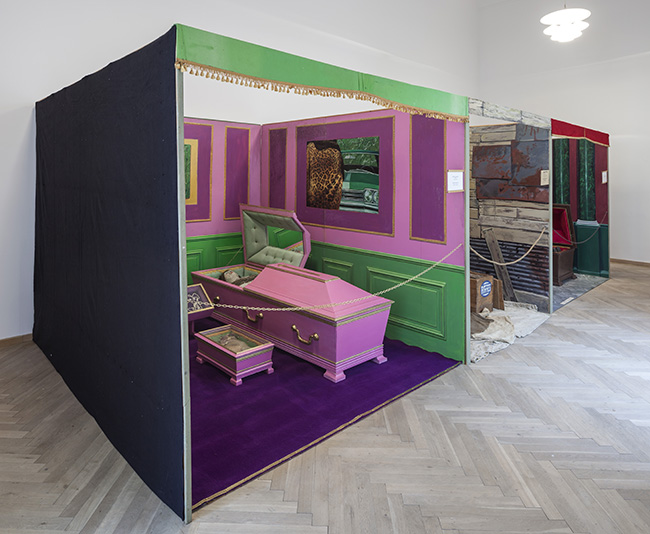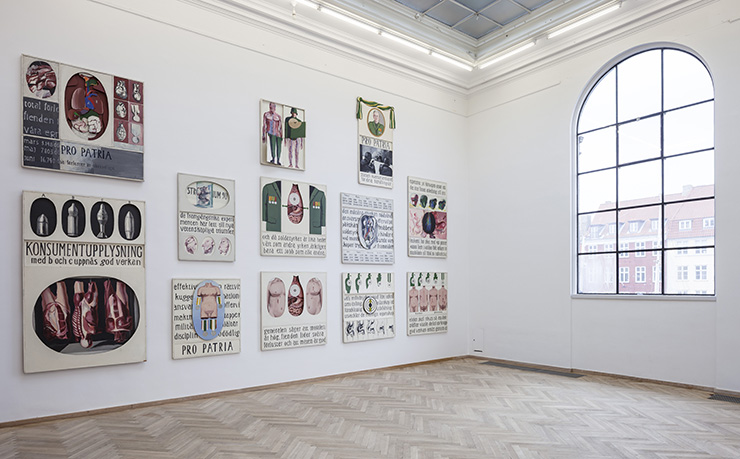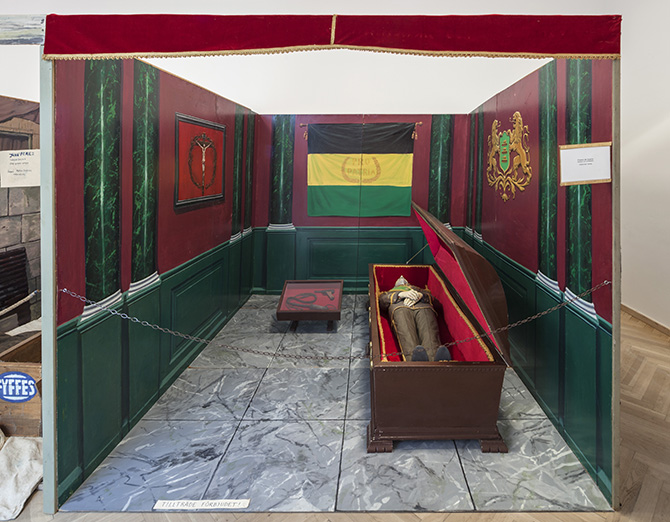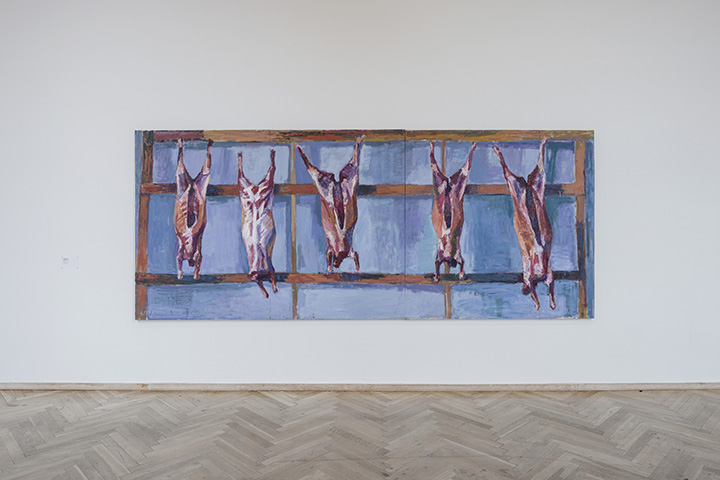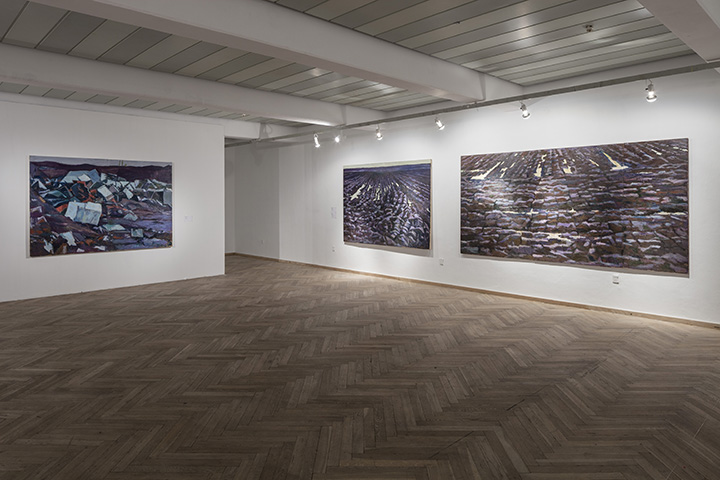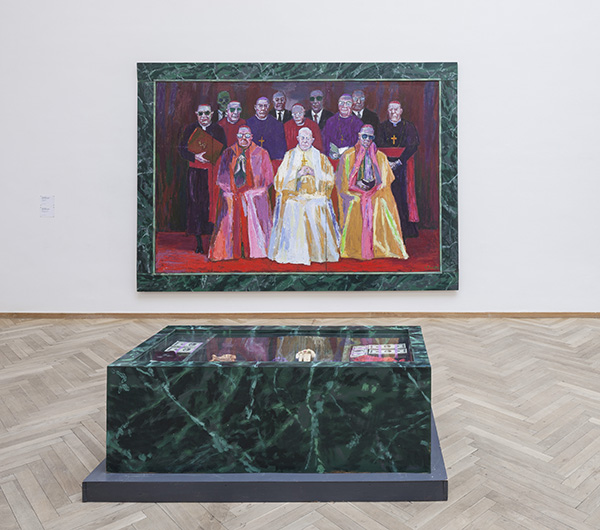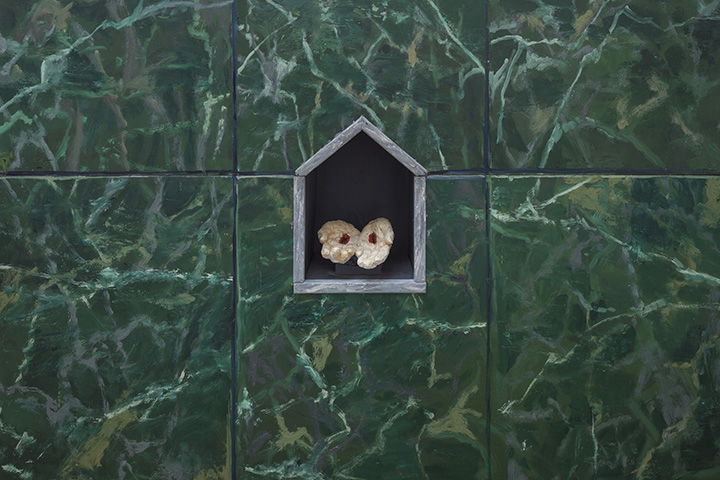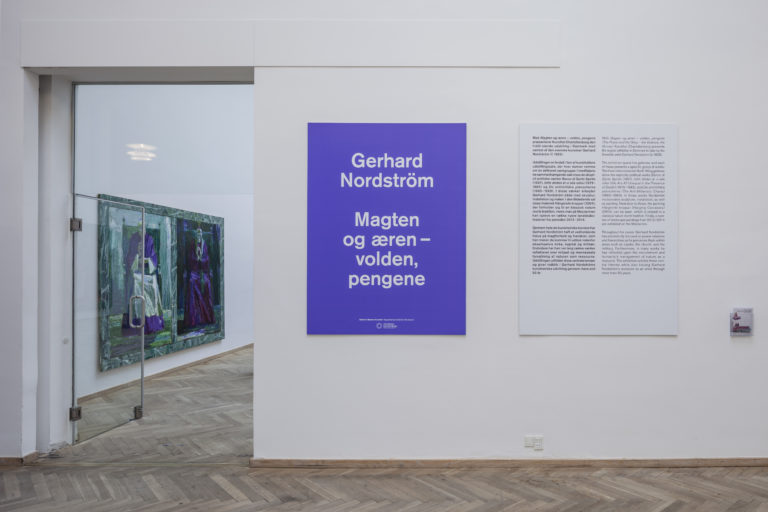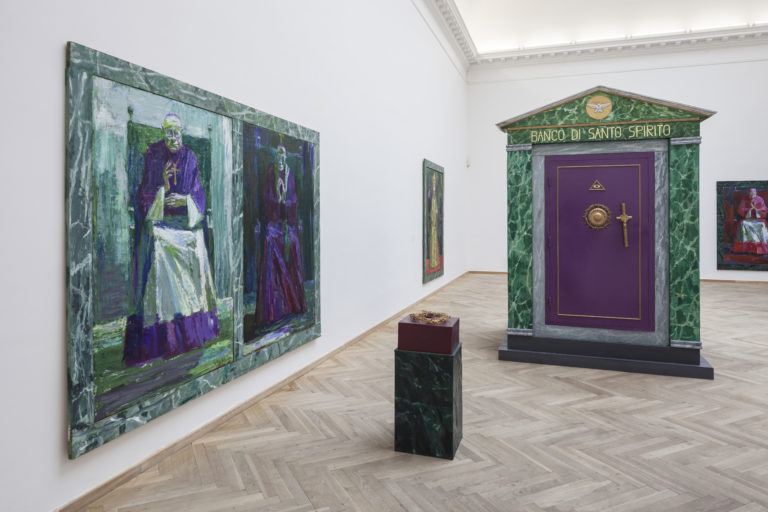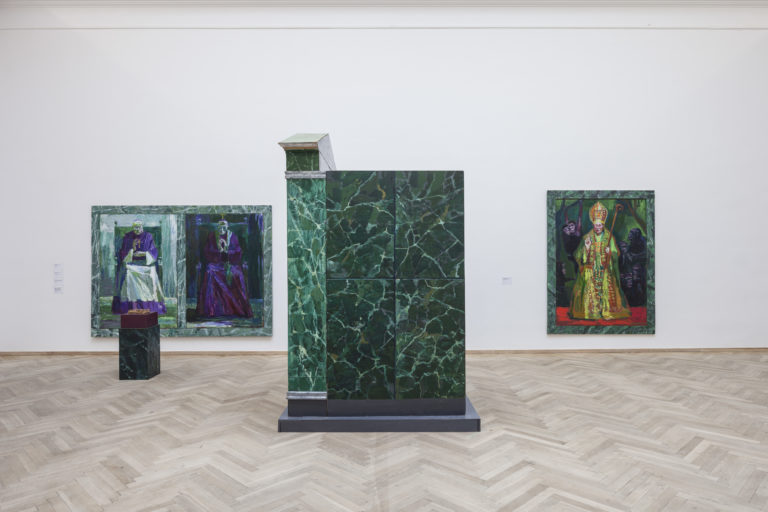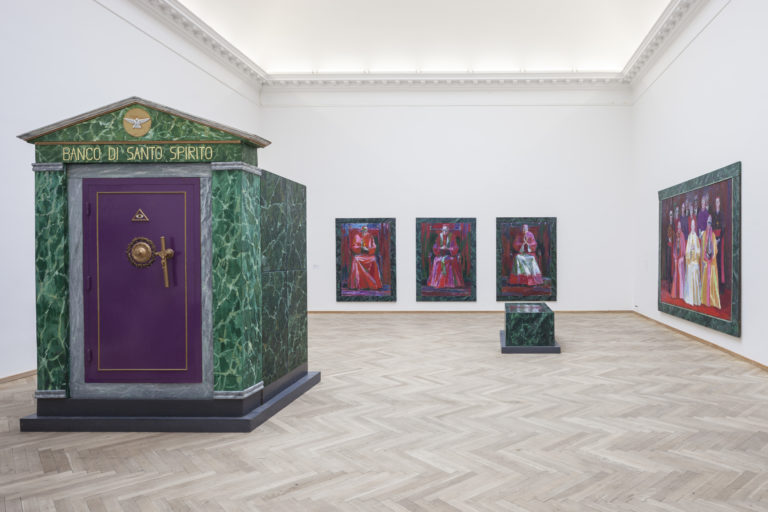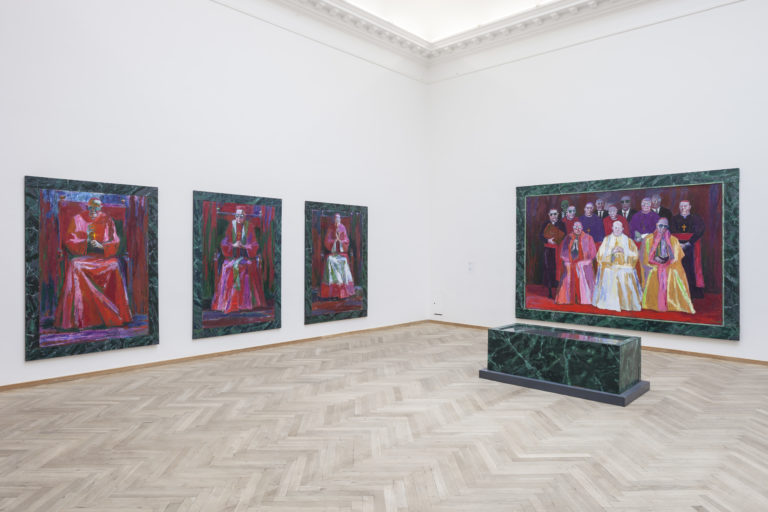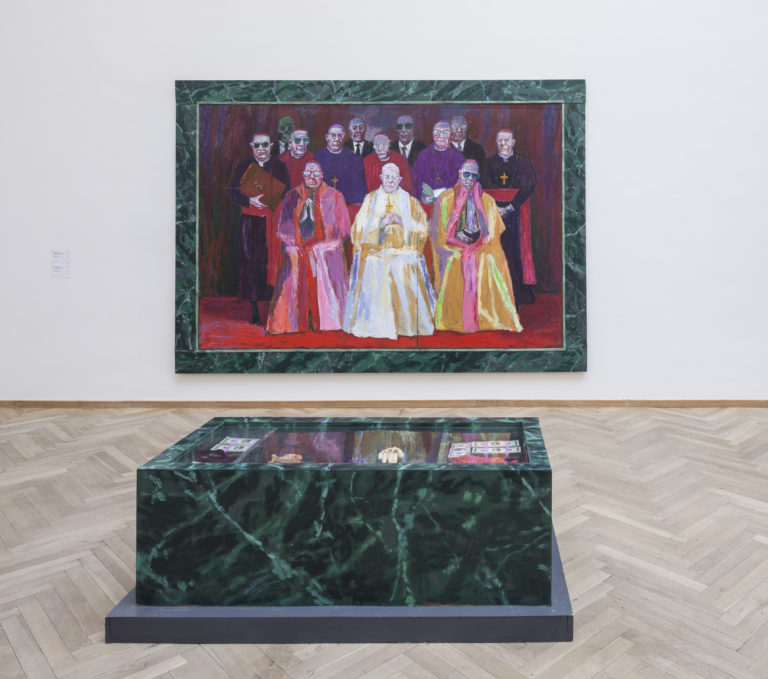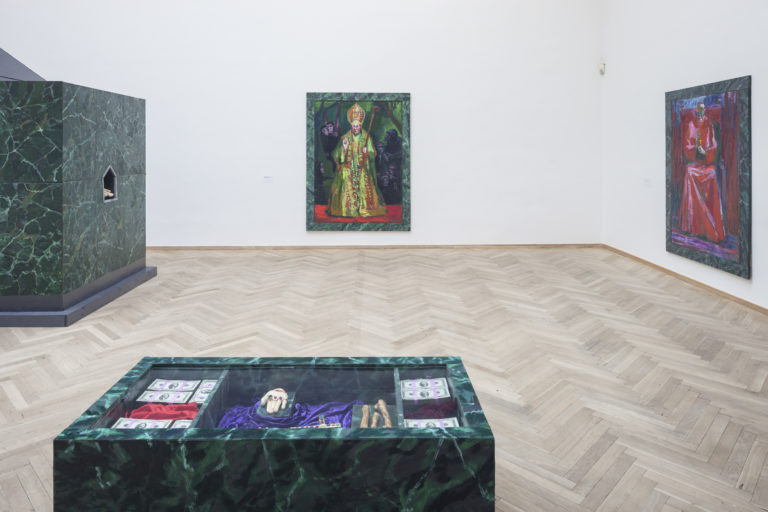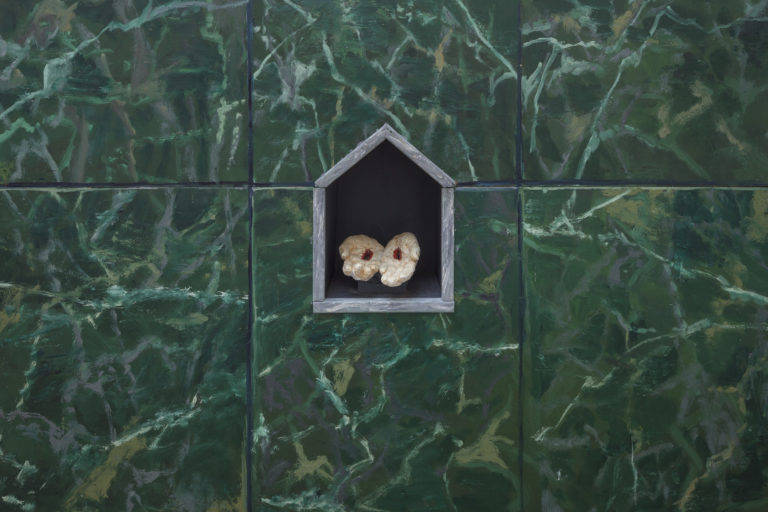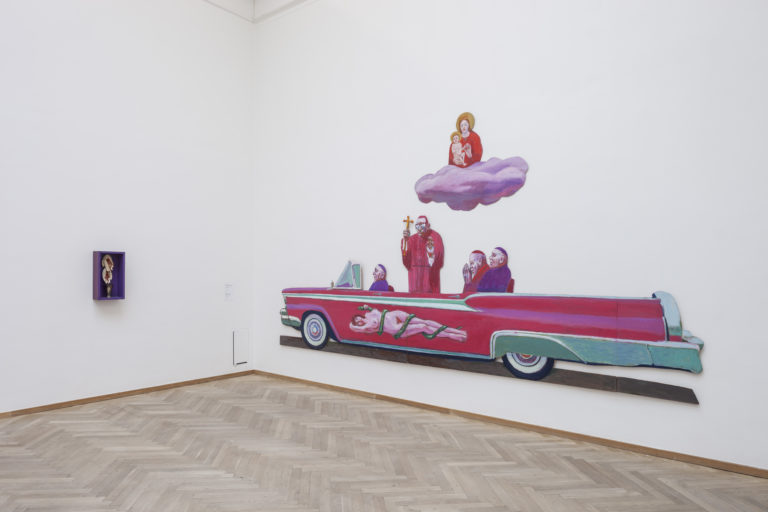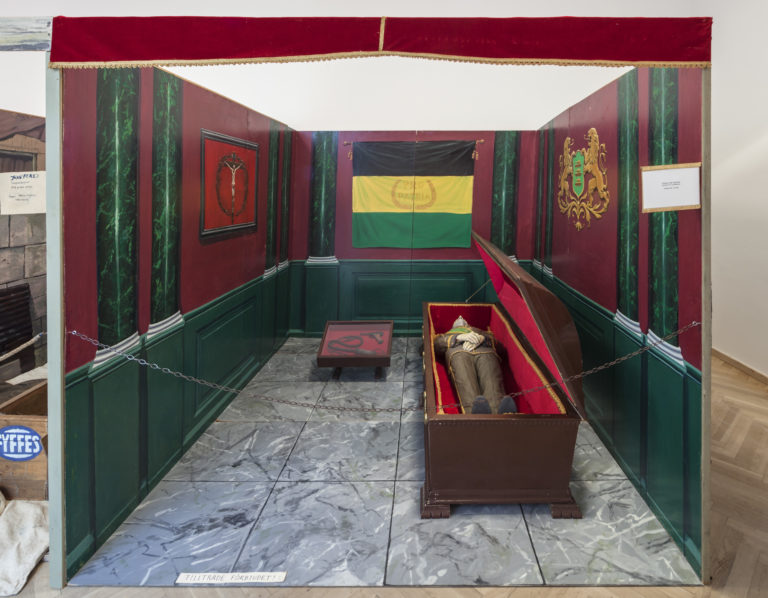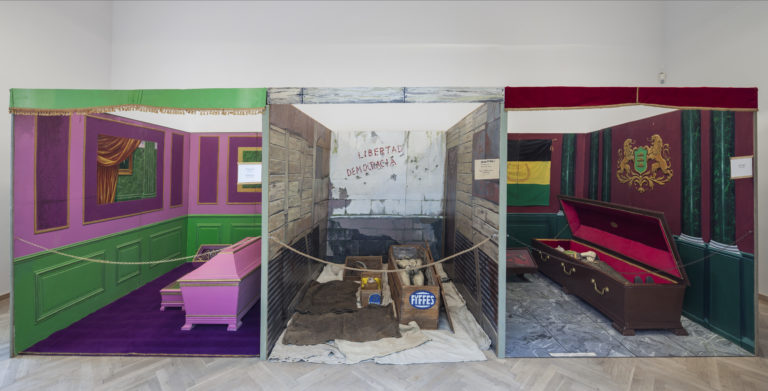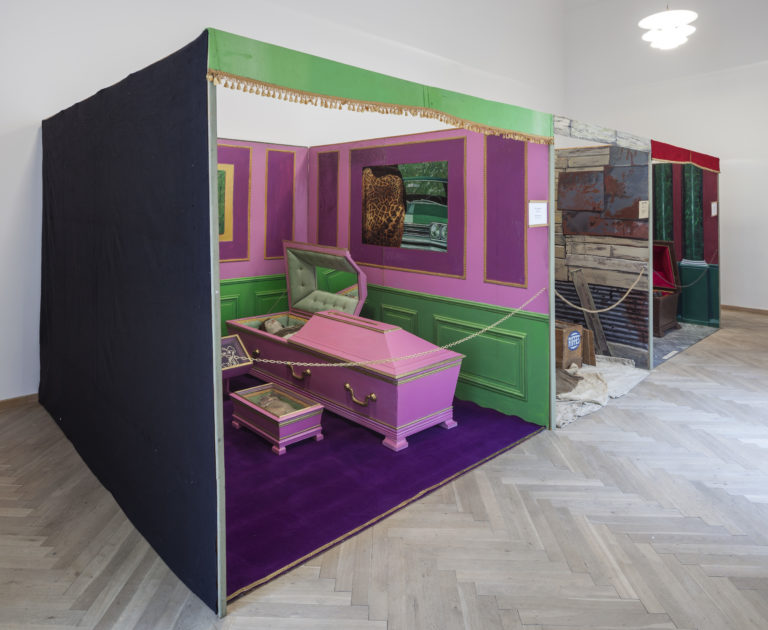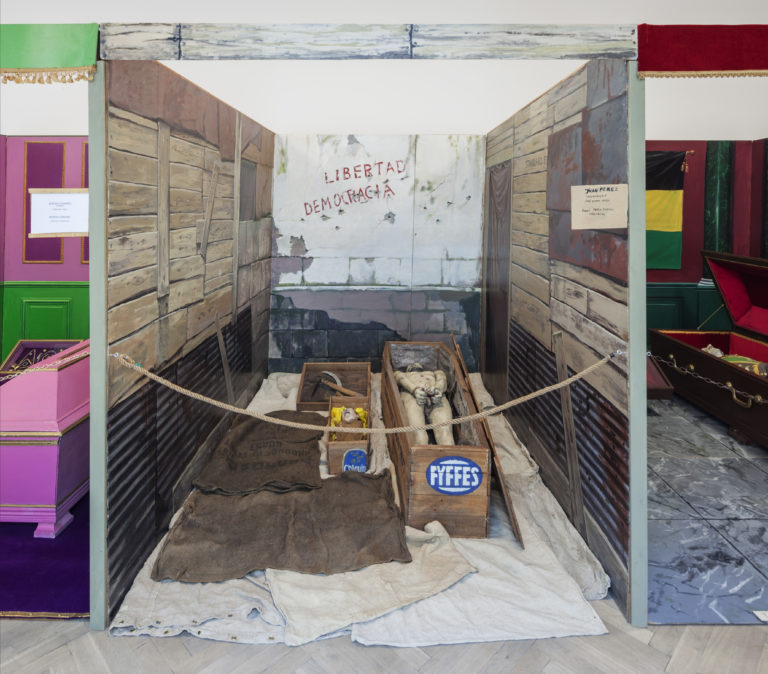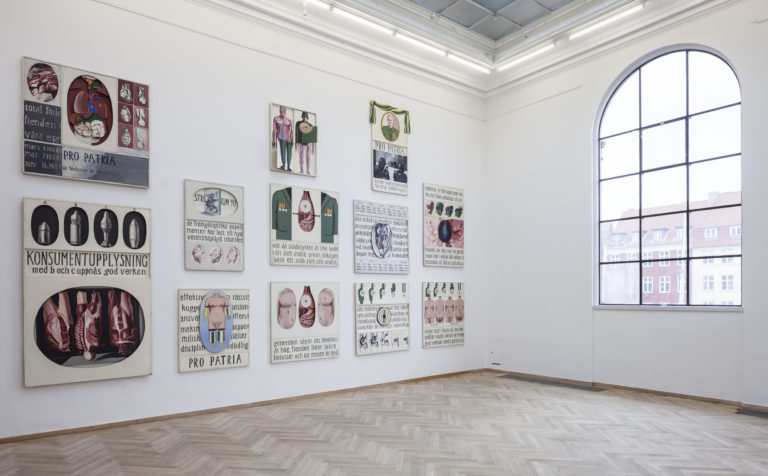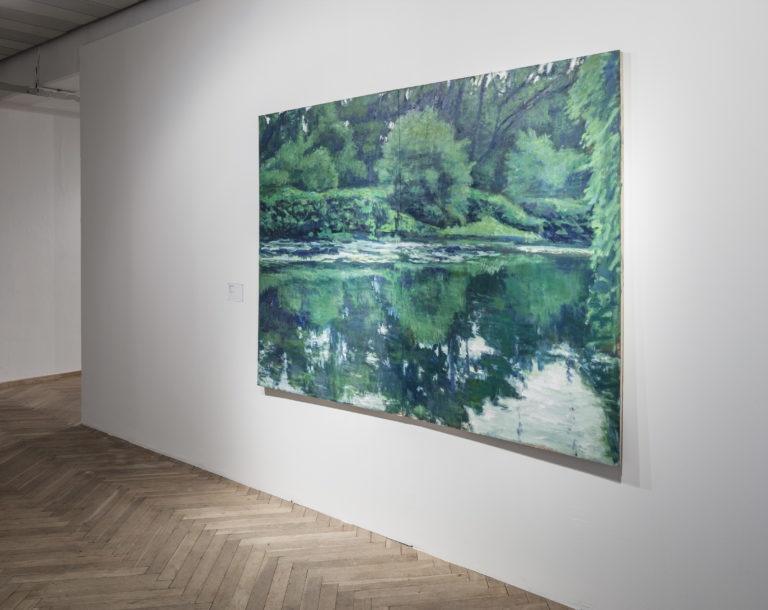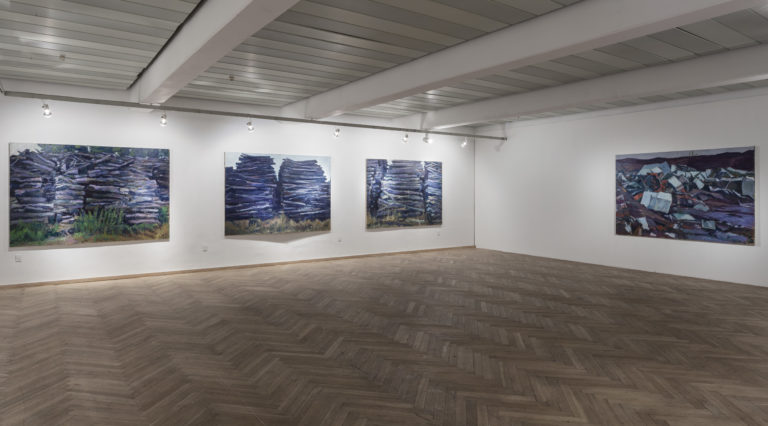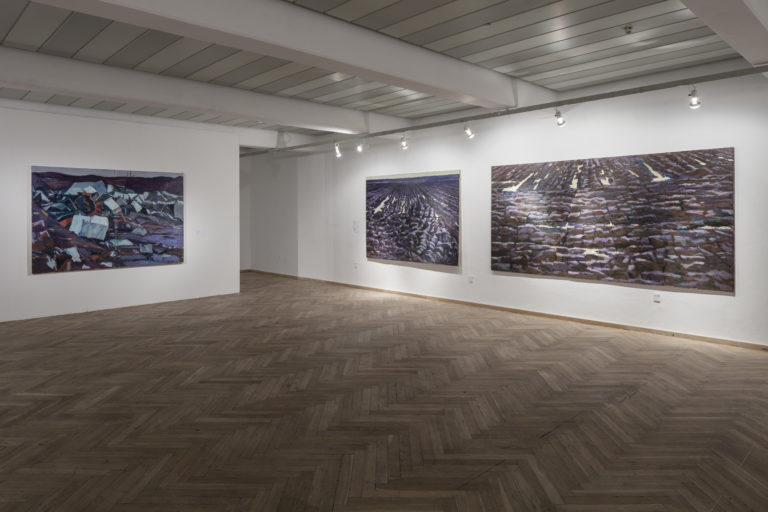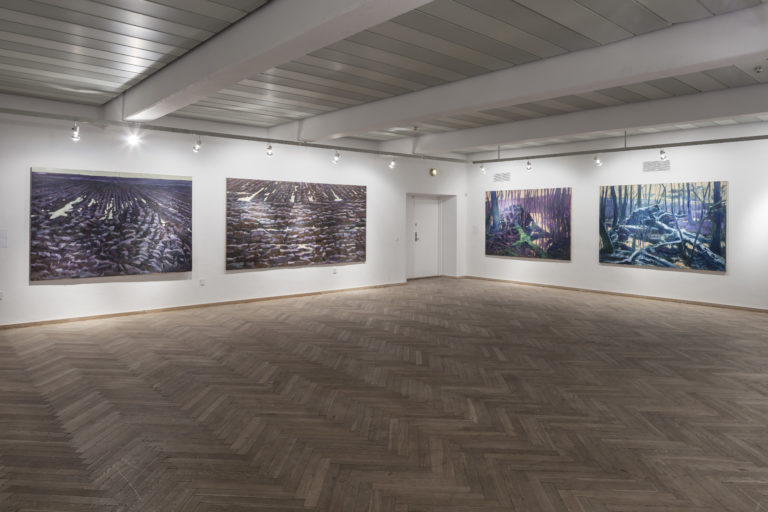
Gerhard Nordström, Magten & æren - volden, pengene, 28. februar – 30. marts 2014
Kunsthal Charlottenborg præsenterer stolt soloudstillingen Magten og Æren – volden, pengene af den svenske kunstner Gerhard Nordström (f. 1925). Gerhard Nordström er bedst kendt for sin klare afstandtagen fra magtmisbrug og miljøforurening, som i hans kunst bearbejdes gennem afbildninger af social uretfærdighed og konsekvenserne af forbrugersamfundet.
Kunsthal Charlottenborgs direktør Jacob Fabricius udtaler: ”Jeg har altid været dybt fascineret af Gerhard Nordströms univers. Især af hans evne til, via billeder, at nagle en stemning, der er både kold, klog og dragende. Der findes ikke mange politiske malere i Norden i dag og jeg mener det er vigtigt, at vi husker på malerkunstens potentiale, der samtidig er en vigtig del af kunstens historie.”
Gerhard Nordström har siden begyndelsen af 1960erne insisteret på at bruge oliemaling til sine politiske værker. På trods af denne såkaldte klassiske metode fremstår hans værker som nutidige og knivskarpe, i deres politiske og sociale kommentarer til den verden vi lever i. I en tid med hurtige politiske og sociale ændringer, malstrømme af information og massemediernes overload af billeder, formår værkerne – disse nærmest frosne øjeblikke – at lave permanente aftryk på vores nethinder og til stadighed at minde os om hvad grådighed og magt fører til.
Udstillingen vil omfatte maleri- og skulpturværker, med serierne Banco di Santo Spirito (1984) og De Antimilitäriska Planscherna (1960-1969) som omdrejningspunkt.
Serien af ’antimilitaristiske’ plancher blander det politiske med det satiriske i en næsten tegneserieagtig malerisk stil og udpensler det absurde ved krigens mål og middel i sine kombinationer af billeder og tekst. De groft malede portrætter af religiøse figurer fra installationen Banco di Santo Spirito står i stærk kontrast til kunsthistoriens forherligende paveportrætter.
Disse eksplicitte politiske billeder kan synes langt fra Nordströms mere subtile øde landskabsmalerier fra 1970erne og 80erne. Men tomheden i disse landskabsmalerier afslører konsekvenserne af miljøforurening og vidner om det, menneskets tilstedeværelse forårsager. Og er blot endnu et eksempel på at alt er politisk – og derfor vigtigt – i Nordströms univers.
